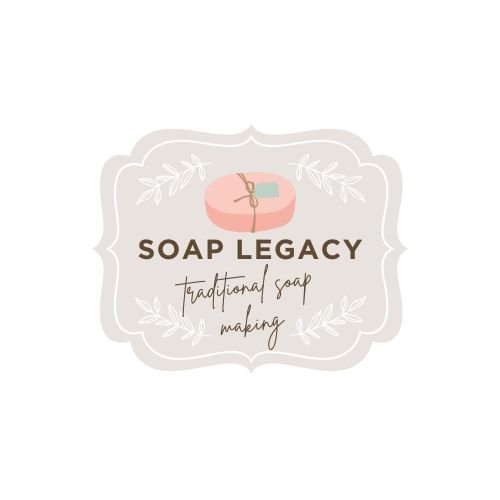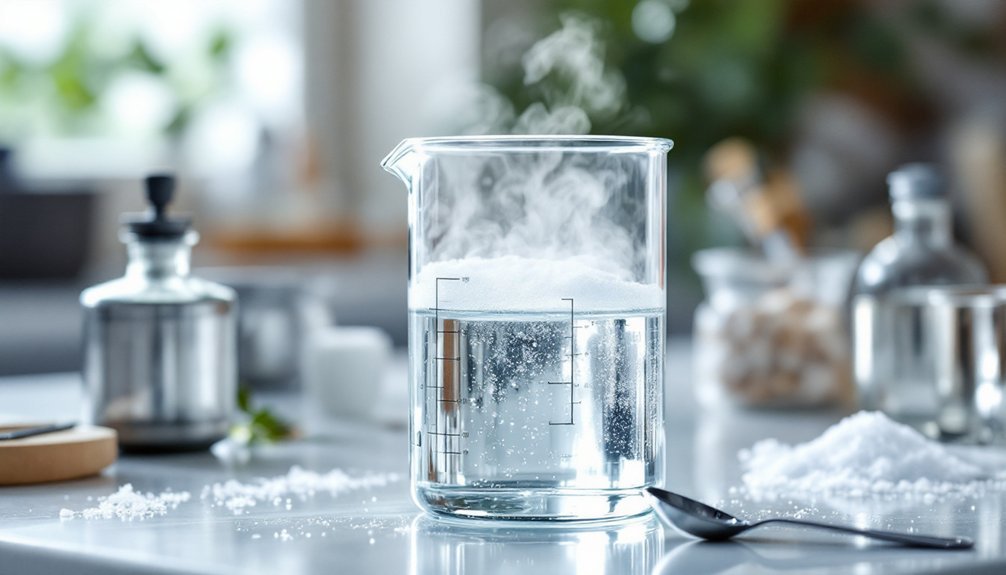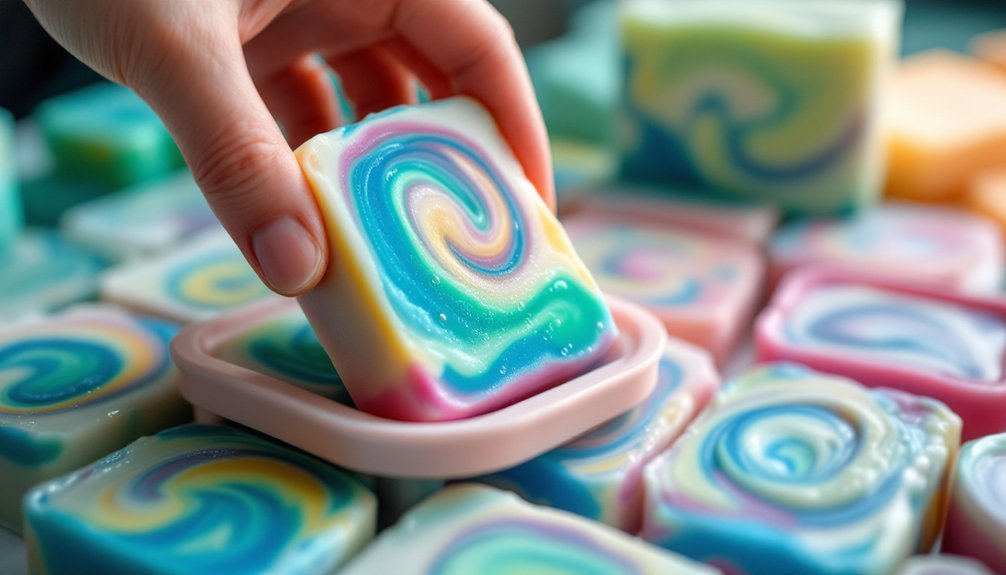Ancient soap makers crafted luxurious scents using three traditional methods you can still apply today. First, they incorporated essential oils like lavender and myrrh for therapeutic benefits. Second, they infused base oils with resins, spices, and barks such as frankincense, cinnamon, and cedar for distinctive aromas. Third, they steeped herbs including chamomile and rosemary to create complex, lasting fragrances. These time-tested techniques offer more than just pleasant scents—they connect your soaps to centuries of aromatic wisdom.
Essential Oils & Plant Extracts in Ancient Soap Making

Aromatherapy wasn't just a modern luxury—it has roots extending back thousands of years in soap making traditions.
Ancient civilizations recognized that plant extracts offered more than just aromatic appeal for their handmade soaps. Egyptians incorporated olive oil and herbs into their formulations, believing these ingredients purified skin while promoting wellness.
The Romans advanced these techniques by adding essential oils to create luxury bathing products. Lavender, rosemary, and myrrh weren't chosen merely for their pleasing scents—they provided therapeutic properties that enhanced the soap's effectiveness.
Similarly, frankincense and myrrh delivered antibacterial and healing benefits alongside their luxurious fragrances.
You'll find citrus oils were particularly valued in ancient soap-making for their invigorating scents and mood-lifting qualities, demonstrating an early understanding of fragrance's beneficial properties beyond simple cleanliness.
Traditional Resin, Spice, and Bark Infusions for Fragrance

Beyond essential oils, soap artisans throughout history have embraced the rich aromatic complexity of resins, spices, and barks to create distinctive fragrances with natural therapeutic properties.
When you infuse frankincense or myrrh into your base oils, you're not only capturing their unique scents but also harnessing their anti-inflammatory and antibacterial benefits.
Incorporating spices like cinnamon, clove, and nutmeg offers both warm, inviting aromas and powerful antimicrobial properties to your handcrafted soap.
Similarly, bark infusions from cedar and oak contribute earthy notes while providing natural astringent effects that improve skin health.
These traditional methods require patience—the slow infusion process extracts the full spectrum of aromatic compounds and therapeutic benefits.
Though labor-intensive, this ancient approach to soap making honors the time-tested wisdom of using purely natural ingredients.
Herbal Steeped Methods for Lasting Aroma

For centuries, herbal steeping has offered soap artisans a powerful method to create lasting, complex aromas in their handcrafted products.
You'll find this technique particularly effective when working with lavender, chamomile, and rosemary—herbs that transfer both natural scents and therapeutic qualities to your soaps.
To create infused oils, gently heat your base oil with dried herbs for several hours. This careful process extracts aromatic compounds without compromising their integrity.
Once your desired intensity is achieved, strain out the plant material before incorporating the oil into your soap mixture.
Herbal steeped methods provide more than just fragrance; they connect your products to traditional remedies that customers recognize and value.
Frequently Asked Questions
How Did Medieval Soap Smell?
You'd find medieval soap's scent varying from earthy to floral. It often carried hints of lavender, rosemary, or clove, mixed with the underlying aroma of animal fats used in its production.
How Do You Scent Your Own Hand Soap?
You can scent your own hand soap by adding essential oils at trace during saponification. Use no more than 5% perfume in solid soaps, experiment with different oil combinations, and store properly to preserve fragrance.
What Did the Ancients Use for Soap?
The ancients used animal fats mixed with plant ashes (Babylonians), olive oil with lye (Greeks/Romans), and animal/vegetable oils with alkaline salts (Egyptians). You'll find they often added local herbs and flowers for fragrance.
How Do You Add Fragrance to Soap?
You'll add fragrance to soap by mixing essential oils or fragrance oils into your soap batch at trace stage. Don't exceed 5% of total weight, and consider using clay to enhance scent retention.
In Summary
You've now explored three authentic methods that span millennia of soap making tradition. Whether you're infusing oils with fragrant botanicals, melting precious resins into your base, or steeping herbs for natural perfume, you're connecting with ancestral wisdom. By incorporating these techniques into your soap crafting, you'll create products that aren't just cleansing—they're aromatic links to our shared human heritage.





Leave a Reply